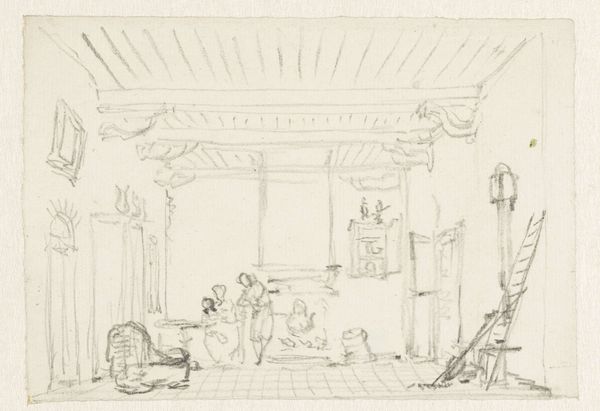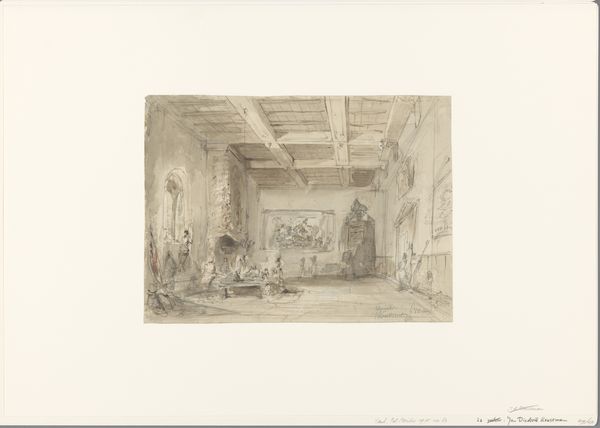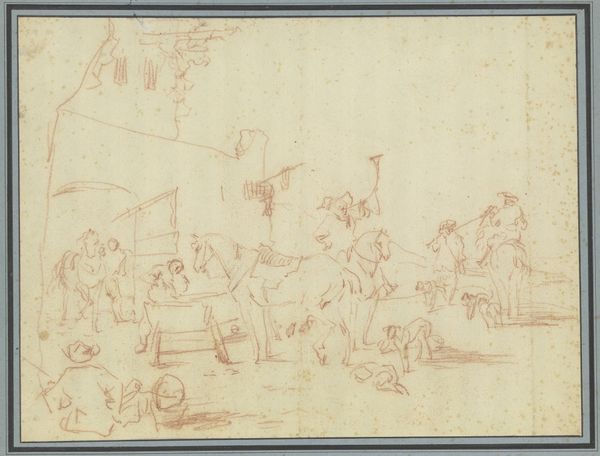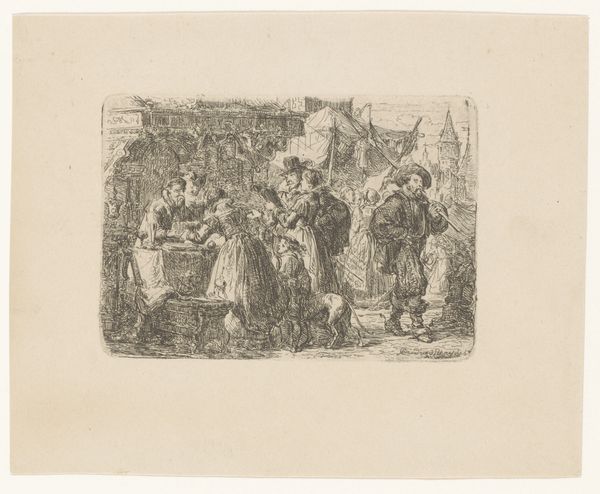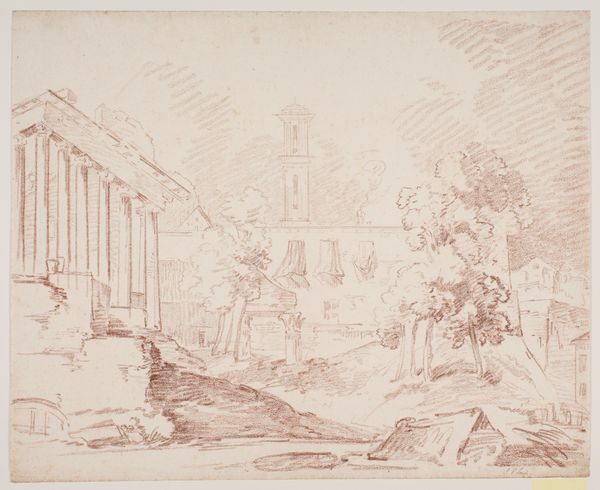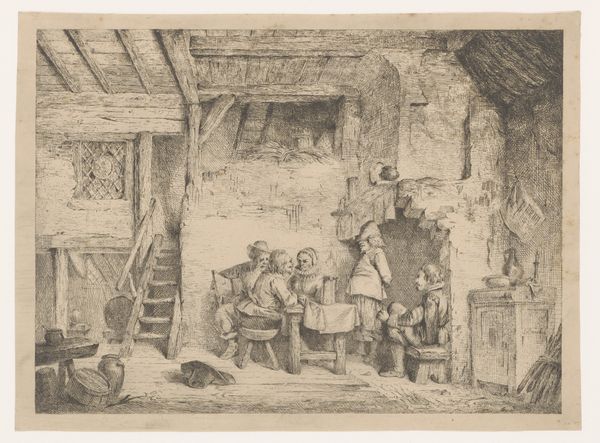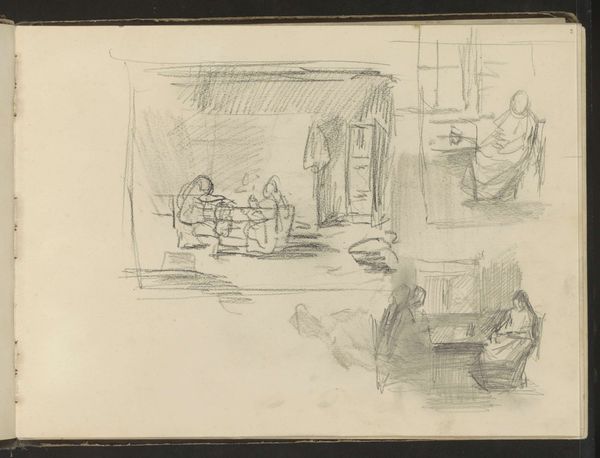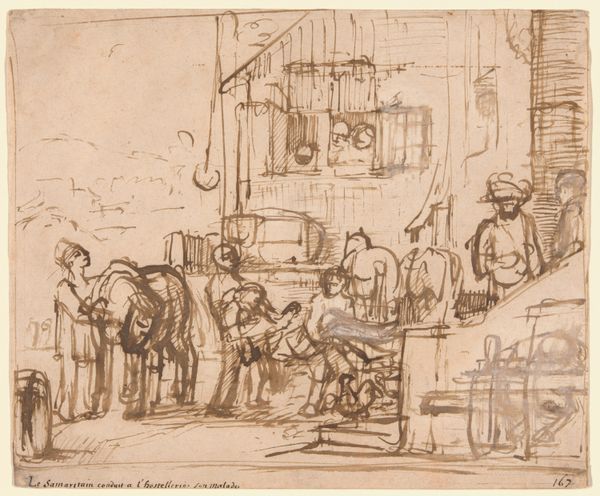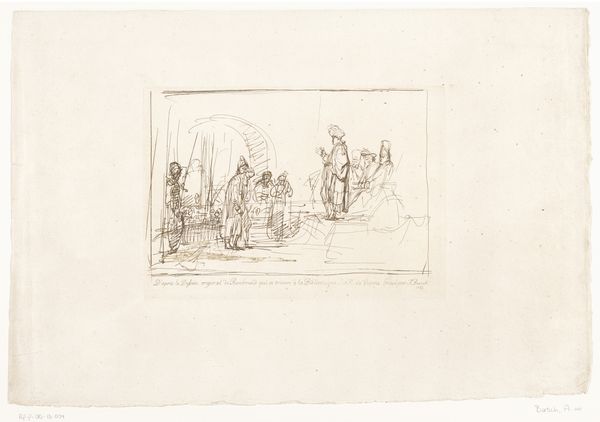
drawing, paper, ink
#
drawing
#
etching
#
paper
#
ink
#
genre-painting
#
realism
Dimensions: height 298 mm, width 354 mm
Copyright: Rijks Museum: Open Domain
Curator: Let’s take a look at "Keukeninterieur," or "Kitchen Interior," an ink drawing on paper rendered in 1852 by Johannes Stroebel. It’s currently held here at the Rijksmuseum. Editor: My first impression is a flurry of domestic activity. The energy of the sketch emphasizes movement, the lines giving a sense of bustling life within the kitchen. Curator: Indeed. Stroebel’s choice to depict a kitchen scene in the mid-19th century places the artwork within the genre tradition of genre painting, which often served to illustrate social structures and moral narratives, focusing here on the domestic sphere. How does it strike you, viewed through the lens of iconography? Editor: Well, the scene is awash in archetypes. The hearth, though not explicitly rendered, is implied as the heart of this domestic sphere. The tools, the objects – they are laden with meaning. Even the light filtering through the window symbolizes a connection to the outside world. The artist manages to portray the daily routines while hinting at the subtle power dynamics and relationships within a household. Curator: Precisely, it is that depiction of the daily toil that provides a glimpse into the labor practices and the social stratification within 19th-century Dutch society. What could you make of the hanging cages, as if an upside down house? Editor: Those are fascinating. It does turn the familiar on its head. It gives us the sense that home is an upside down cage for these dwellers. Curator: Interesting perspective. Now, thinking of reception, in 1852 realism was really coming into vogue. So works like Stroebel’s drawing, focusing on the ordinary and the everyday, gained in popularity. Editor: Yes, it offered an unvarnished window onto a common life, revealing the psychology of domesticity by use of recognizable icons and arrangements, something that is accessible, yet enduring. It seems the drawing holds deeper, embedded realities. Curator: I agree; I think we’ve both discovered different layers of meaning, from social context to symbolic significance. Editor: Absolutely, offering us a rich image, encapsulating a brief view on 19th-century Dutch home life.
Comments
No comments
Be the first to comment and join the conversation on the ultimate creative platform.

